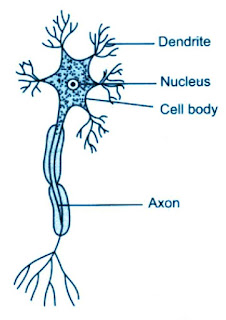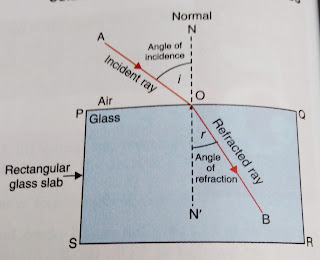NCERT Solution for Class 6 Maths Chapter 3 Playing with Numbers Ex 3.7
Playing with Numbers: Here you get NCERT Solutions for Class 6 Maths Chapter 3 Playing with Numbers Ex 3.7 with Answers Pdf free download.In NCERT Solution Class 6 Maths with Answers you get question-answer based on latest exam pattern. By providing NCERT Chapter-wise Class 6 Maths Questions with Answers our target to help students get concept of the lesson very well.
You can also visit NCERT Questions for Class 6 Maths Chapter-wise Questions with Answers to revise your syllabus thoroughly and enhance the chances of securing high marks in your board exams. It also helps in your CBSE NCERT Class 6 online test, online exam for admission well.
-------------------------------------------------------------
Board CBSE
-------------------------------------------------------------
TextBook NCERT
-------------------------------------------------------
CLASS Class 6
--------------------------------------------------------
SUBJECT Maths
----------------------------------------------------------
CHAPTER Chapter 3
-------------------------------------------------------------
SUBJECT Playing with Numbers
--------------------------------------------------------------
Visit NCERT Solutions
-------------------------------------------------------------------
NCERT Class 6 Chapter 3 Ex 3.1
NCERT Class 6 Chapter 3 Ex 3.2
NCERT Class 6 Chapter 3 Ex 3.3
NCERT Class 6 Chapter 3 Ex 3.4
NCERT Class 6 Chapter 3 Ex 3.5
NCERT Class 6 Chapter 3 Ex 3.6
You May Like
NCERT Solutions Class 6 Science
NCERT Solutions for Class 6 Maths Chapter 3 Playing with Numbers Ex 3.7 with Answers
Exercise 3.7
Question 1:
Renu purchases two bags of fertilizer of weights 75 kg and 69 kg. Find the maximum value of weight which can measure the weight of the fertilizer exact number of times.
Answer 1:
Renu purchases two bags of fertilizer of weights 75 kg and 69 kg
[Note: For finding maximum weight, we have to find H.C.F. of 75 and 69.]
H.C.F. of 75 and 69 = 3
Therefore the required weight is 3 kg.
Question 2:
Three boys step off together from the same spot. Their steps measure 63 cm, 70 cm and 77 cm respectively. What is the maximum distance each should cover so that all can cover the distance in complete steps?
Answer 2:
Three boys step off together from the same spot. Their steps measure 63 cm, 70 cm and 77 cm respectively
[ Note: For finding the minimum distance, we have to find L.C.M of 63, 70 and 77.]
L.C.M. of 63, 70 and 77 = 7 x 9 x 10 x 11 = 6930 cm.
Therefore, the minimum distance is 6930 cm.
Question 3:
The length, breadth and height of a room are 825 cm, 675 cm and 450 cm respectively. Find the longest tape which can measure the three dimensions of the room exactly.
Answer 3:
The length, breadth and height of a room are 825 cm, 675 cm and 450 cm respectively.
[ To find the longest tape we have to find H.C.F. of 825 cm, 675 cm and 450 cm.]
H.C.F. of 450, 675, 825 = 3 x 5 x 5 = 75 cm
Therefore, the longest tape is 75 cm can measure the three dimensions of the room exactly.
Question 4:
Determine the smallest 3-digit number which is exactly divisible by 6, 8 and 12.
Answer 4:
[ Note: to find the smallest 3-digit number which is exactly divisible by 6, 8 and 12 first we have to find LCM of 6, 8, 12 than we divide the 3-digit smallest number using the LCM, the quotient which we get, we take successor of the quotient and multiplied it by LCM]
L.C.M. of 6, 8 and 12 = 2 x 2 x 3 x 2 = 24
The smallest 3-digit number = 100
To find the number, we have to divide 100 by 24
4
4
Successor of quotient = 5
Therefore the required number =( 5×LCM)
= (5 × 24)
= 120 (Ans)
Question 5:
Determine the largest 3-digit number which is exactly divisible by 8, 10 and 12.
Answer 5:
[ Note: to find the largest 3-digit number which is exactly divisible by 8, 10 and 12 first we have to find LCM of 8,10, 12 than we divide the 3-digit largest number using the LCM, the reminder which we get is subtracted from 3-digit largest number ]
L.C.M. of 8, 10, 12 = 2 x 2 x 2 x 5 × 3 = 120
The largest three digit number = 999
8
39
Therefore, the required number = 999 – 39 = 960
Question 6:
The traffic lights at three different road crossings change after every 48 seconds, 72 seconds and 108 seconds respectively. If they change simultaneously at 7 a.m. at what time will they change simultaneously again?
Answer 6:
[ to find the answer we have to first find LCM of 48, 72 and 108. The LCM is total seconds which is taken, than we convert the seconds into minutes to find the time. ]
L.C.M. of 48, 72, 108 = 2 x 2 x 2 x 2 x 3 x 3 x 3 = 432 sec.
After 432 seconds, the lights change simultaneously.
432 second = 7 minutes 12 seconds
Therefore the time = 7 a.m. + 7 minutes 12 seconds
= 7:07:12 a.m.
Question 7:
Three tankers contain 403 litres, 434 litres and 465 litres of diesel respectively. Find the maximum capacity of a container that can measure the diesel of three containers exactly the same number of times.
Answer 7:
[ To the maximum capacity of a container that can measure the diesel of three containers exactly the same number of times we have to find HCF of 403, 434, 465]
Therefore, HCF of 403, 434, 465 is 31
Therefore, 31 litres of container is required to measure the quantity.
NCERT Solutions for Class 6 Maths Chapter 3 Playing with Numbers Ex 3.7 with Answers
Question 8:
Find the least number which when divided by 6, 15 and 18, leave remainder 5 in each
case.
Answer 8:
[To Find the least number which when divided by 6, 15 and 18, leave remainder 5 in each case, we have to first find the LCM of 6, 15 and 18 than we add 5 with the LCM ]
L.C.M. of 6, 15 and 18 = 2 x 3 x 3 x 5 = 90
Therefore, the required number = 90 + 5 = 95
Question 9:
Find the smallest 4-digit number which is divisible by 18, 24 and 32.
Answer 9:
[ To Find the smallest 4-digit number which is divisible by 18, 24 and 32, we first find the LCM then divide the 4-digit smallest number by that LCM. The quotient which we get due to division, we take its successor and this successor is multiplied by LCM ]
L.C.M. of 18, 24 and 32 = 2 x 2 x 2 x 3 x 3 × 4 = 288
The smallest four-digit number = 1000
3
136
Therefore, the required number = (288 × 4 = 1152.
Question 10:
Find the L.C.M. of the following numbers:
(a) 9 and 4 (b) 12 and 5 (c) 6 and 5 (d) 15 and 4
Observe a common property in the obtained L.C.Ms. Is L.C.M. the product of two numbers in each case?
Answer 10:
(a)
L.C.M. of 9 and 4
=4×9
= 36
(b) L.C.M. of 12 and 5
= 12×5
= 60
(c) L.C.M. of 6 and 5
= 6×5
= 30
(d) L.C.M. of 15 and 4
= (5×4)
= 60
Yes, the L.C.M. is equal to the product of two numbers in each case.
And L.C.M. is also the multiple of 2,3,6.
Question 11:
Find the L.C.M. of the following numbers in which one number is the factor of other:
(a) 5, 20 (b) 6, 18 (c) 12, 48 (d) 9, 45
What do you observe in the result obtained?
Answer 11:
(a)
L.C.M. of 5 and 20
= 5 × 4
= 20
(b)
L.C.M. of 6 and 18
= 6 x 3
= 18
(c)
L.C.M. of 12 and 48
= 2 x 2 x 4 x 3
= 48
(d)
L.C.M. of 9 and 45
= 3 x 3 x 5
= 45
From these all cases, we can conclude that if the smallest number is the factor of largest number, then the L.C.M. of these two numbers is equal to that of the larger number.
NCERT Solutions for Class 6 Maths Chapter 3 Playing with Numbers Ex 3.7 with Answers


